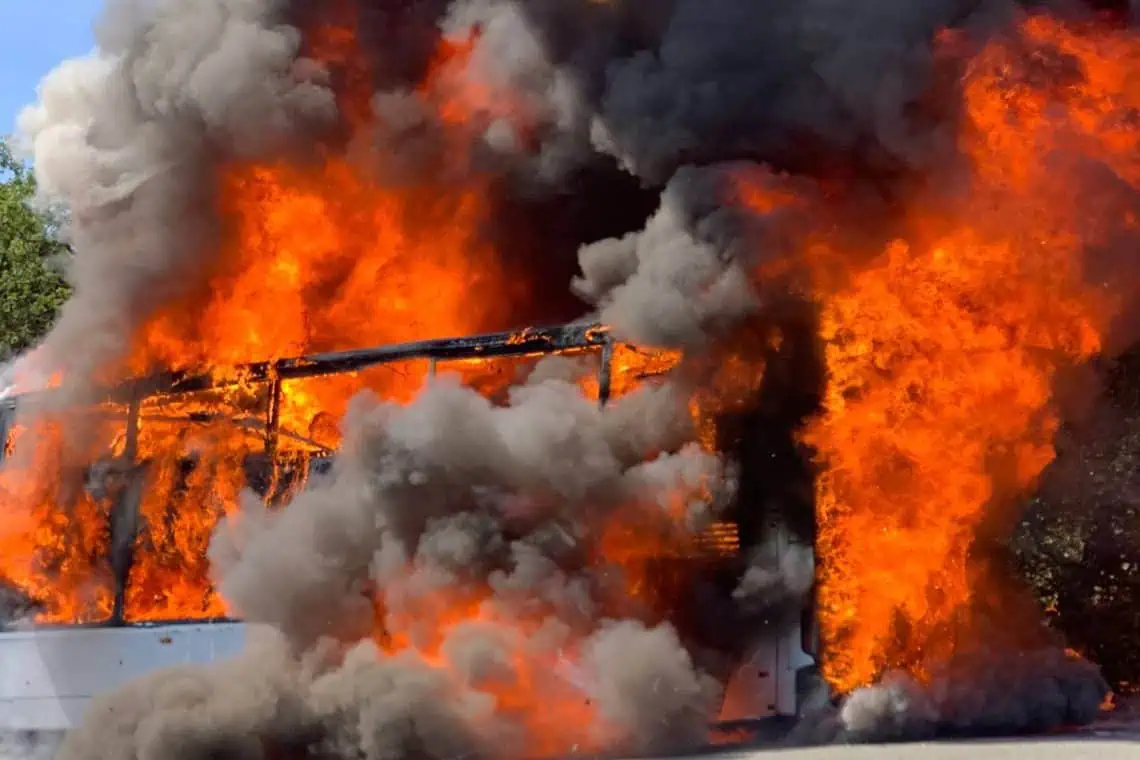A devastating bus crash on South Africa’s N1 highway has left 42 people dead and dozens injured, reigniting urgent debates about road safety, vehicle maintenance, and regulatory oversight for international transport. The tragedy near Louis Trichardt in Limpopo province highlights the human cost of long-haul travel across busy trade routes, as families mourn and investigations continue.
The Horrific Accident Unfolds
The incident occurred around 6 p.m. on Sunday, October 12, 2025, when a long-distance bus lost control on the N1 near Makhado. The vehicle, carrying passengers returning home after work or visits, veered off the road, rolled down an embankment, and flipped multiple times before stopping. Rescue teams worked through the night to recover bodies and aid survivors, with seven children among the deceased.
Authorities reported that the bus overturned in a mountainous region roughly 400 kilometers north of Johannesburg. Preliminary investigations suggest possible driver error, mechanical failure, or hazardous road conditions. The passengers were primarily international travelers, underscoring the vulnerability of cross-border journeys. This tragedy echoes a similar Limpopo crash in March 2024, which claimed 45 lives when a bus fell off a bridge.
The N1 highway is a crucial artery for trade and travel, but accidents are common due to overloading, fatigue, and inadequate maintenance. Ensuring safety on such routes remains a pressing concern for authorities and transport operators alike.
Survivor Accounts: Tales of Terror and Survival
More than 30 passengers were hospitalized with injuries ranging from minor cuts to severe trauma. Initial survivor accounts describe sheer panic. One person recalled the bus swerving violently before tumbling: “It felt like the world was ending. Screams everywhere, then silence.” Others credited quick thinking and luck for their survival.
Emergency responders faced challenging terrain, as the bus landed in a ravine. Survivors have expressed gratitude for rescue efforts but frustration over delays caused by the remote location. These firsthand accounts will be vital for understanding what went wrong and improving safety protocols for long-distance travel.
Leadership Response and National Mourning
South African President Cyril Ramaphosa extended condolences to the families of the victims, describing the incident as a “tragic loss” that transcends borders. Limpopo Premier Phophi Ramathuba visited the scene, pledging to strengthen road safety measures. Officials emphasized the human impact of cross-border travel and the need for preventive action.
Calls for Stricter Vehicle Inspections and Regulations
Transport experts and advocacy groups are urging stricter enforcement of cross-border regulations. Analysts recommend mandatory vehicle inspections, enforced rest periods for drivers, and digital monitoring to prevent accidents. Without these measures, high-risk corridors like the N1 remain vulnerable to similar tragedies.
Global Lessons in Road Safety
The Limpopo crash has parallels to international long-distance bus accidents, where fatigue, mechanical issues, and poor road conditions have caused fatalities. Lessons from global transport safety practices, including stricter hours-of-service rules and enhanced inspections, could inform improvements to regional travel protocols.
Ensuring Safety in Trade Corridors
The tragedy also highlights safety concerns along major trade corridors connecting countries across Africa. As infrastructure projects expand, ensuring resilient roads, smart monitoring systems, and harmonized regulations is critical to protect lives and support sustainable trade.
Moving Forward: The Road Ahead
The Limpopo bus crash is a stark reminder of the fragility of life on the road. While survivor courage and leadership empathy have been evident, prevention requires stricter regulations, better inspections, and lessons drawn from global experience. For the families of the 42 victims, meaningful reforms could ensure no more lives are lost to preventable accidents.
